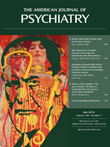Sabina Spielrein's Death
To the Editor: The Images in Psychiatry feature on Sabina Spielrein in the January 2012 issue of the Journal (1) unfortunately mischaracterized the circumstances of her death, inadvertently reinforcing a nearly simultaneous effort at the scene of her murder to alter the facts of history. Dr. Fusar-Poli's essay noted, “The Wehrmacht murdered [Spielrein] and her two daughters in 1941.” Although the 1941 date is reported in some earlier works on Spielrein (2), recent records have indicated—as the sources cited in the essay and later ones—that she died with thousands of other Jews in Rostov-on-Don in August 1942 (3–5). Under the direction of the SS Einsatzgruppe charged with exterminating Rostov's Jews, she was last seen being herded toward the Zmiyevskaya Balka, a ravine outside town, where she and her daughters were almost certainly shot to death. The error in the date of her death might be a small thing in other circumstances, but along with the omission of any mention of the reason she was killed—because she was a Jew—it eerily echoes an attempt in Russia to erase precisely that memory. At almost the same time the essay appeared, the world press reported that the plaque at the site of the massacre, which read “On 11/12 August 1942 there had been destroyed [here] by the Nazis more than 27,000 Jews,” had been replaced by one marking the death site of many “peaceful citizens of Rostov-on-Don and Soviet prisoners-of-war” (6, 7). Thus, we write to preserve the memory of the thousands of Jews of Rostov-on-Don who died at the Zmiyevskaya Balka in August 1942 only because they were Jews, including Sabina Spielrein and her two daughters.
1. : Sabina Spielrein. Am J Psychiatry 2012; 169:21Link, Google Scholar
2. : A Secret Symmetry: Sabina Spielrein Between Freud and Jung. Translated by
3. : Love, psychoanalysis, and destruction. J Anal Psychol 1999; 44:355–373Crossref, Medline, Google Scholar
4. : Tender love and transference: unpublished letters of CG Jung and Sabina Spielrein. Int J Psychoanal 1999; 80:1189–1204Crossref, Medline, Google Scholar
5. : The snares of seduction in life and in therapy, or what do young Jewish girls (Spielrein) seek in their Aryan heroes (Jung), and vice versa? Int Forum Psychoanal 2007; 16:12–27, 81–94Crossref, Google Scholar
6.
7. : Revisionism not remorse. Jerusalem Post, Feb 17, 2012Google Scholar



